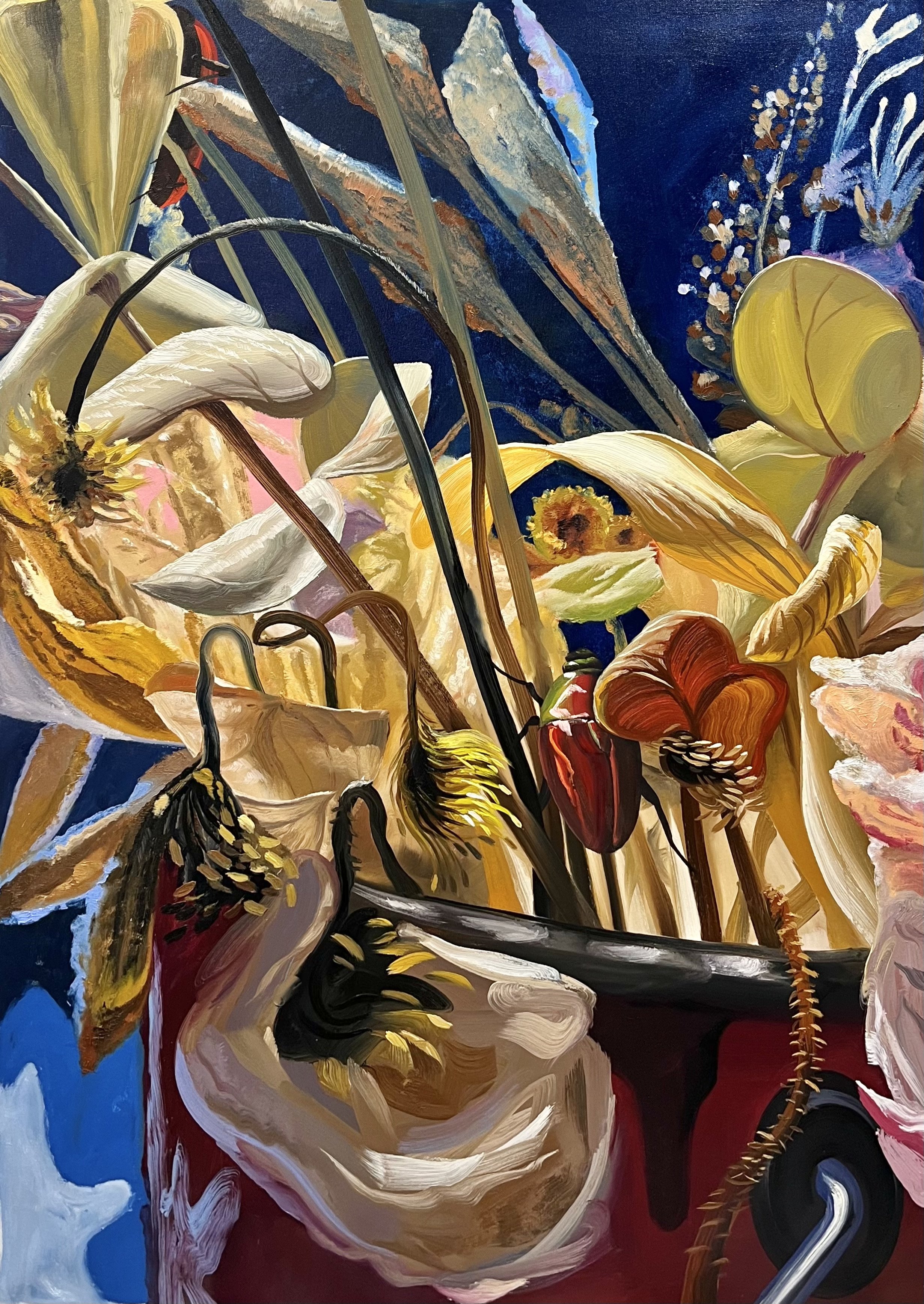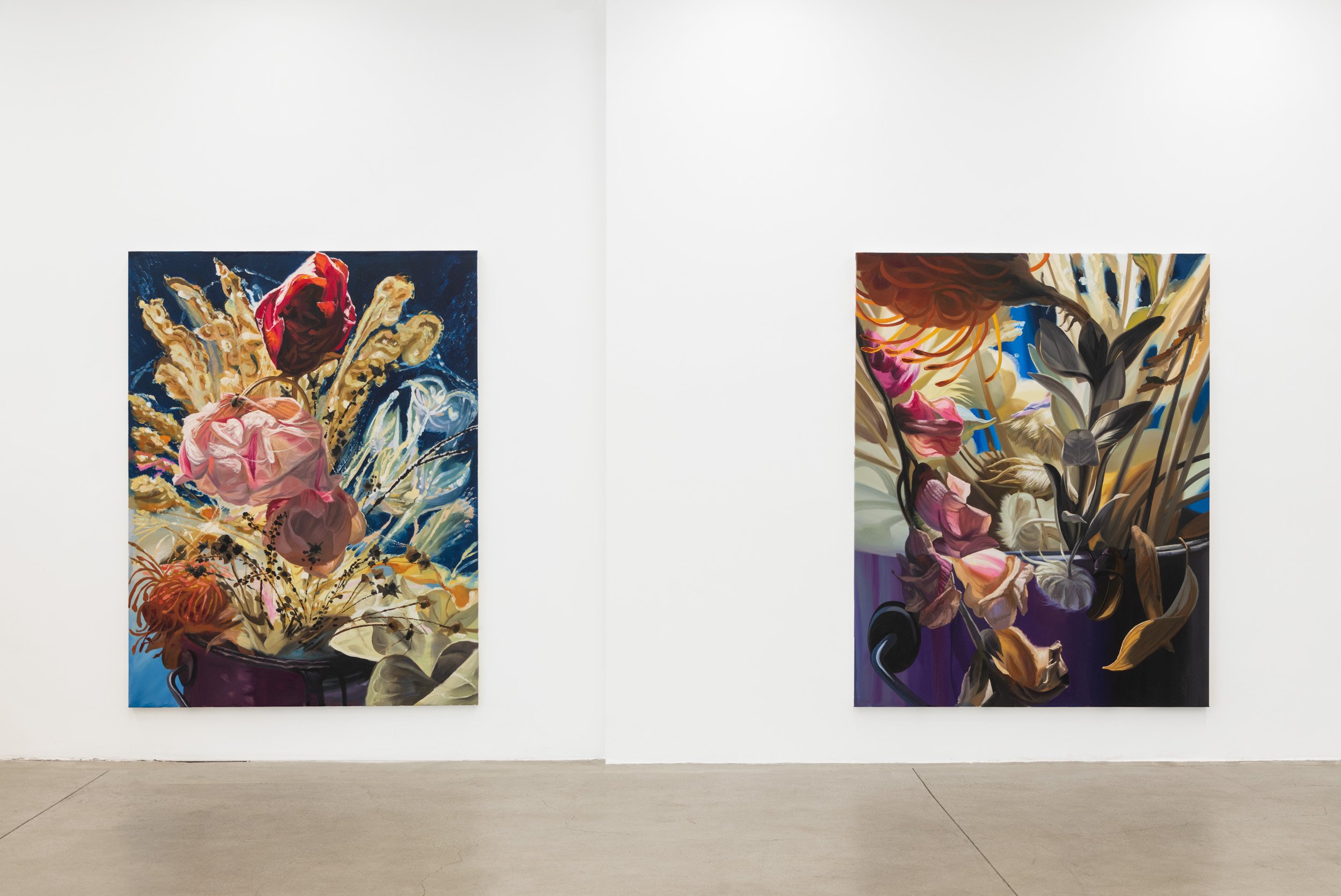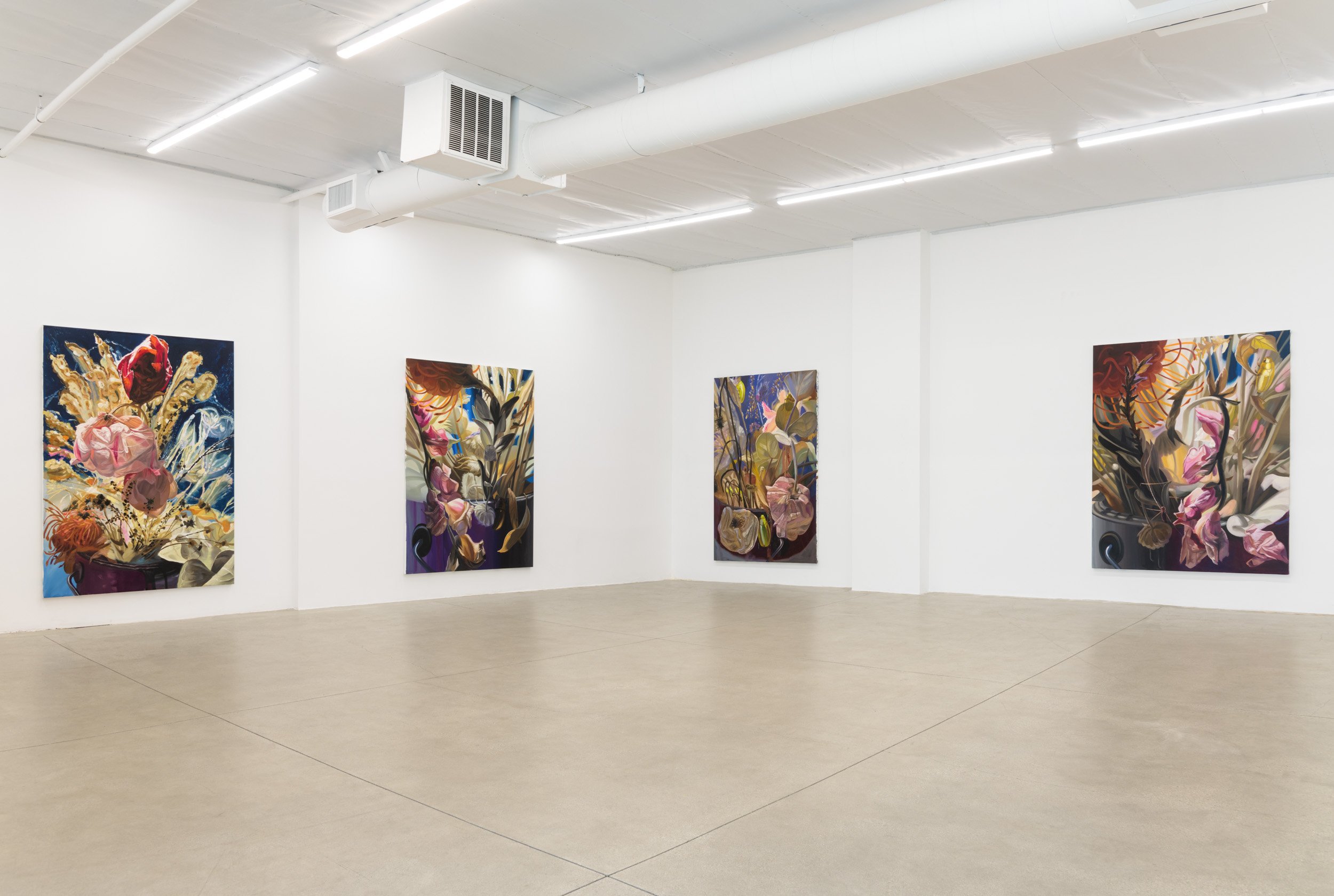FLOWERS SING IN D MINOR
New Work by Gerald Davis
September 30 - November 12, 2023 | Opening : Saturday September 30, 5-8pm
Dried Poppies and Red Scarab, 2023 Oil on canvas 57" x 80"
WORKS
Flowers in vanitas paintings are vibrantly colored, fulsome, and blooming, preserved at the peak of their vitality and beauty. The more alluring the depiction, the more salient the painting’s intended warning against paying attention to frivolous, fleeting pleasures. Gerald Davis continues the baroque tradition but subverts expectations, rendering his roses, violets, and poppies in various stages of death and decay. Portrayed in exacting detail and cast in a lush yet acerbic light, the collapsing botanical structures assume a statuesque quality that challenges the association between flowers and fragility. The eight still lifes or nature mortes, “dead natures,” in Flowers Sing in D Minor, are as vivid and intangible as holograms, bright but not exuberant, stark though not tragic, and equally enthralling as they are allusive.
Davis started painting floral arrangements as an exercise in observation, an attempt to depict the likeness of a physical object rather than an imaginary one. It wasn’t until the bouquet’s colors began to fade, fuchsia to mauve, emerald to sage, that he realized he’d found his next subject. While the real hues dimmed, the colors on the canvas deepened, became richer, more nuanced, and surprising. Employing a seemingly infinite number of variations of tone and chroma, Davis assiduously records the color gradient between life and death, from verdant to ashen. Texture and opacity, culled from textiles, velvet to leather, add further contrast and definition to form. Whereas the pastel pink in Paper Kite Butterfly on Gold appears satiny and voluptuous, the same blush in Grey Rose and Green Scarabs assumes a papery, ghostly quality.
His manipulation and depiction of light further accentuate his dexterous handling of color as detail and atmosphere. Amber foliage appears all but gilded, the electric carmine of a scarab’s exoskeleton seems hot to the touch, and even the chalky white stalks seem to simmer against the Prussian Blue background. Sensuous chiaroscuro shading not only affords the floral arrangements a formal volume but imbues them with a sense of heft and impermanence. Though the contrast is stark, the compositions modulate an even distribution of luminosity and shadow in a way that preserves rather than distorts the integrity of the representation. The careful balancing of tone allows the paintings to feel both sumptuous and grotesque and keeps them from slipping toward the melodramatic or the sacrosanct. This careful restraint and refusal to exaggerate shifts the onus of interpretation and dialectical negotiations onto the shoulders of the viewer, and so demanding a deeper, more concerted level of engagement.
The grandeur of the exhibition’s scope and scale, each of the canvases is almost seven feet tall, induces an Alice in Wonderland-inspired immersion, wherein the viewer is not engaging with the flowers from above but beneath. The unexpected perspective and the resulting magnification of the painted objects incite a visceral impression of having shrunk rather than the flowers, butterflies, beetles, and spiders having grown. At this size, the artist’s uncanny ability to render natural phenomena, the exquisite origami of a crenelated petal, the gossamer penumbra of seed pods, the iridescent glint of a beetle’s shell, is on full display. The compositions are overwhelmingly fact-filled. No matter how long you look, there is still more to absorb, more to delight in and reflect upon. The immediacy of the images produces not so much a sense of motion but a chimerical shiftiness, flashes of perception that illuminate seemingly new details with each glance.
The intimate yet rigorous reproductions bespeak a commitment to observation and deep attention as well as a tender feeling for the unique temporalities of the quotidian on behalf of the artist. To memorialize flowers in full wilt, stems bowed in acquiescence to the natural order of growth and decline, is to undermine the traditional imperative to rebuke the ephemerality of beauty and instead embrace life as it presently exists—yes, even wilted, yes, faded, yes cobwebs and all—accepting the condition that flowers, like life itself, are beautiful precisely because they are evanescent. –Tara Anne Dalbow
















